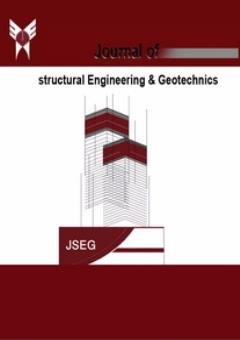Seismic Fragility Analysis of a RC Bridge with Uniform and Non-Uniform Random Scour Patterns
Subject Areas : Structural EngineeringAli Raoof Mehrpour Hosseini 1 , Mehran Seyedrazzaghi 2 * , Nasser Shamskia 3
1 - Department of Civil Engineering, Qazvin Branch, Islamic Azad University, Qazvin, Iran
2 - Department of Civil Engineering, Qazvin Branch, Islamic Azad University, Qazvin, Iran
3 - Department of Civil Engineering, Qazvin Branch, Islamic Azad University, Qazvin, Iran
Keywords: Bridge, Fragility analysis, Scour, Multi-hazard, Vulnerability assessment,
Abstract :
Previous natural disaster assessments had identified bridges as vulnerable structures against hydraulic hazards, particularly scouring. Additionally, in areas with high seismic activity, bridges are exposed to minor damage to complete collapse, in most cases requiring immediate occupancy structural performance levels in the event of an earthquake. Previous studies have focused on vulnerability assessments by considering the effects of simultaneous hazards. This study examines a simply supported RC bridge model with a discontinuous deck-girder superstructure installed on cap beams via elastomers. Seismic vulnerability assessments were conducted by developing fragility curves through nonlinear time history analyses on scoured models. One of the study's objectives is to consider the effects of non-uniform patterns in different foundations of the four-span model by generating random depth samples. The study also evaluated even depths as the uniform scenario for vulnerability assessment. The results indicate that, in all limit states considered in the study, the uniform has a higher probability of exceeding the limit states than the non-uniform scenario. However, in evaluating critical scoured models, the uniformly maximum credible scoured pattern did not necessarily have a higher probability of exceeding all limit states. In other words, the non-uniform scenario, which had pier(s) with the maximum credible scour depth, had a more critical vulnerability in some limit states.

